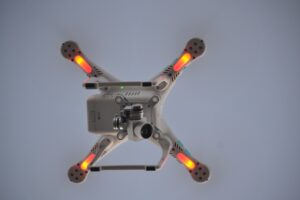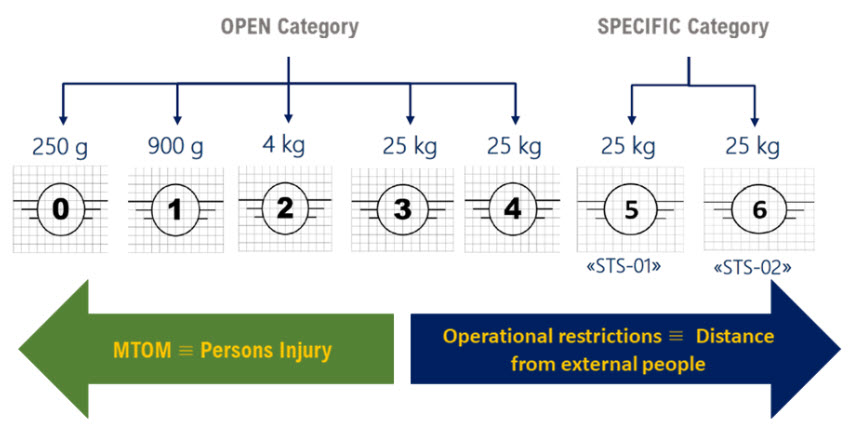Class Label
In accordance with current Delegated Regulation 2019/945, that entered into force on December 31, 2020, UAS will be classified into 7 different classes, depending on the aircraft specifications. These classes are called Class Labels, and they range from class C0 to C6. The specifications and physical characteristics of each unmanned aircraft will define the class to which they belong.
It should be noted that these class labels apply to the open (low risk) and specific (medium risk) categories. Class labels C0, C1, C2, C3 and C4 apply to the open category and labels C5 and C6 correspond to the standard scenarios: STS-01 and STS-02, respectively, of the specific category.

Class identification label
Open category UAS
The ‘open’ category is the home for most leisure drone activity and low-risk commercial activity. As a drone operator or remote pilot, you must know how to fly your drone safely and legally. The ‘open’ category is itself subdivided into three sub-categories – A1, A2, A3.
Specific category UAS
The ‘specific’ category caters to riskier operations not covered under the ‘open’ category. To operate in this category, you, as a drone operator, need operational authorization from the National Aviation Authority where they are registered, unless a Standard Scenario covers the operation.
When it is time to fly a drone, the drone class must be taken into account? These classes represent the minimum features that our drone should have. For this reason, EASA considered the inclusion of these labels as a good option to differentiate the essential drones’ capabilities.
So, In the regulation, the different class labels are visually indicated as follows:

This classification refers mainly to the maximum take-off mass (MTOM), the technical specifications of the aircraft, the systems implemented, the systems that control these unmanned aircraft or the capabilities to operate safely and reliably in the different categories designed in the new European regulation. Unmanned aircraft must meet the requirements of the class to which it is chosen, to be able to belong to it. Otherwise, a drone that does not have a class label will be considered a “Legacy drone”, or what is the same, a drone prior to the entry into force of the current regulations. In order to identify which class label each unmanned aircraft has, a label will be affixed so that it is clearly visible, legible and indelible.
In conclusion, it can be said that thanks to this new system of class labels, a high level of standardization is achieved when designing, manufacturing, marketing and using drones as a product, whether for a commercial or recreational purpose. In addition, it is a guarantee of safety since to obtain these class labels, quality controls must be passed that verify and guarantee quality.
If you are a drone operator, check more information about Civil drones (unmanned aircraft).
